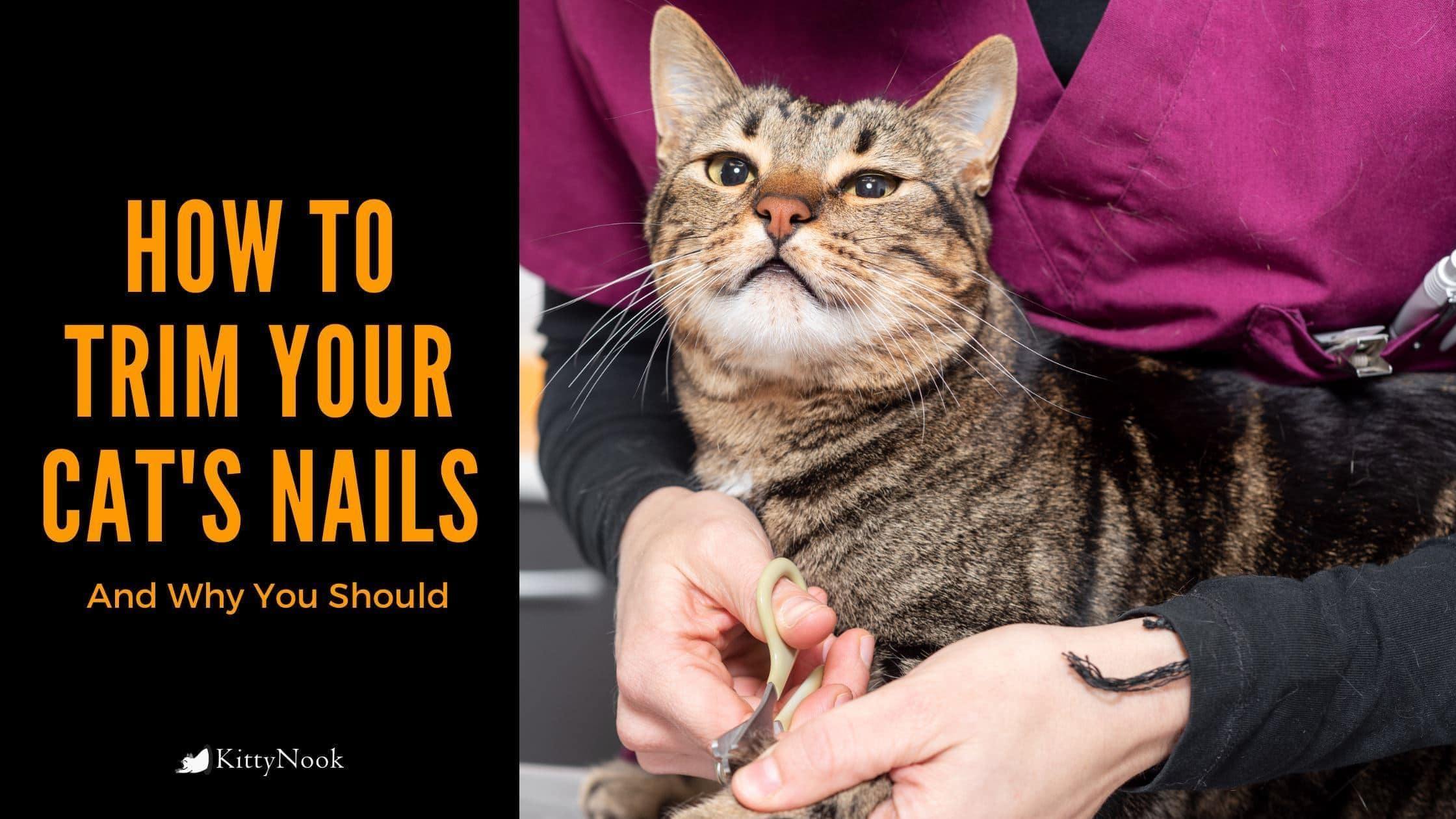Nail trimming has great benefits no just to our cats, but us owners as well. It keeps the scratches on our furniture to a minimum. Today we share how to cat nails successfully and safely.
Cats are well-armed creatures; they have sharp teeth and fast reflexes. Agility is in their genes. Those claws they have can hurt target animals. It can also ruin rugs, drapes, and couches. This is why we should trim their nails.
But let us first talk about the elephant in the room.
Declawing vs. nail trimming
Before we teach you how to trim your cat's nails, let us quickly talk about declawing. In the ye old days, the solution to this mayhem that was cats' clawing was basic: declaw them. Today, many veterinarians and cat lovers view declawing as an absolute last resort. Several vets refuse to declaw. In many European countries, declawing is even illegal.
The possible issues that may arise after declawing—discomfort, action modifications, and increased possibility of biting—are deemed by many to outweigh the "advantages." In truth, the cats gain no advantage in this procedure. Vets who would be willing to perform declawing are receding, and owners must get used to a world where declawing does not happen.
Why should you trim your cat's nails?
This is obvious, but sharp feline nails bring upon even more damages than cut ones. Your couch, carpeting, and drapery will benefit from this. Claw sharpening is a natural cat's action and should not be stopped. That's why owners should have cat scratching post.
To owners who cannot tolerate being scratched, I can guarantee that trimming their nails will cause lesser damage to human skin. Cat scratches aren't merely painful. Scratches can become infected—bear in mind that our cats dig in the litter box with those same nails. Flea-infested cats may also spread out the "cat scratch disease."
How To Trim Your Cat's Nails

Cats gain significant advantages when we understand how to trim their nails effectively. A cat's claw develops in layers. When our feline friends sharpen their claw, they eliminate the older layers to reveal sharper ones. However, cats are generally not successful in removing the older layers. This can result in having ingrown nails, which can become incredibly uncomfortable and may cause infections. Regular nail trims protect them against ingrown nails. Furthermore, a cat with nicely trimmed nails isn't likely to be banished from a room.
There is an upside: a skilled group of individuals trimming a timid cat's nails can do the task in less than 20 seconds. The downside: cats do not often tolerate nail trims. So to help you, here are some guidelines you can use to cut your cat's nails efficiently.
Familiarize yourself with the claws
The primary step in knowing how to trim your cat's nails is knowing the cat's paws. Most have five claws on each front foot and four on each rear foot, which totals 18. However, polydactyly is quite common. Learn your cat's paws. Understand where and how many nails are there. Additionally, keep in mind that cats' claws usually withdraw while at rest. You can extend them for trimming by using pushing gently on the top and under each toe base.
Lastly, know the quick. The quick is the pink part of a cat's nails that consists of blood and nerves. Cutting the nails to this point will result in discomfort and even blood loss in extreme cases.
Train your cat to tolerate being still and being handled on the foot
Cats seldom dislike nail trims unless the quick is struck. However, several felines do not like to hold still and have their feet touched. I suggest that cat parents handle their pet cat's feet daily. If your cat can tolerate having their feet handled, the work will be a lot easier. Kittens are incredibly responsive to this adaptation, but it's not too late for your mature cats as well. You can start now!
Try to make the nail trimming experience enjoyable
Rewards, petting, and soft voices go a long way when giving our cats a trim. If your pet cat starts to snap, abort the mission immediately. Cats are creatures of routine and have remarkably great memories. If you fight with your cat to trim her nails, I can assure you that the process will only get more challenging in time.
If you can, do the job as a group
I usually work with others when giving the trim. Holding a cat down requires a large amount of skill—the goal is to limit the cat's movement without them knowing too much that they're being restrained. It must be done carefully and lovingly. A good restrainer will not allow the feline to stand up and walk away (unless, of course, the cat starts to snap).
Time is precious
Very few cats will tolerate a 10-minute nail trim. This is why knowing anatomy is essential. Also, don't bumble around. If done right, nail trimming will be over before the cat knows they're restrained.
Use the right tools with great techniques
Ideally, one person should delicately limit and reassure the cat. The other person needs to extend the nail and trim the ends swiftly. Having the right tools will help you to go through each foot smoothly. When in doubt, it's better to remove too little than too much. The sharpest part of your cat's nail is at the very end, so you truly only need to trim the very ends. If you mistakenly hit the quick, use corn starch or specialty powders such as Kwik Stop to stop the bleeding.
Bear in mind that nail cutting is like any new skill. If you commit to doing it consistently, then you get better and better.
How do you trim your cat's nails? Are there any tricks that we missed? Tell us in the comments below!





















